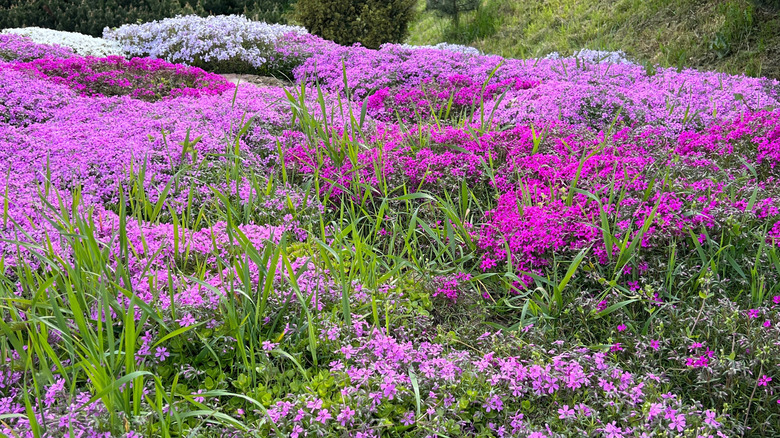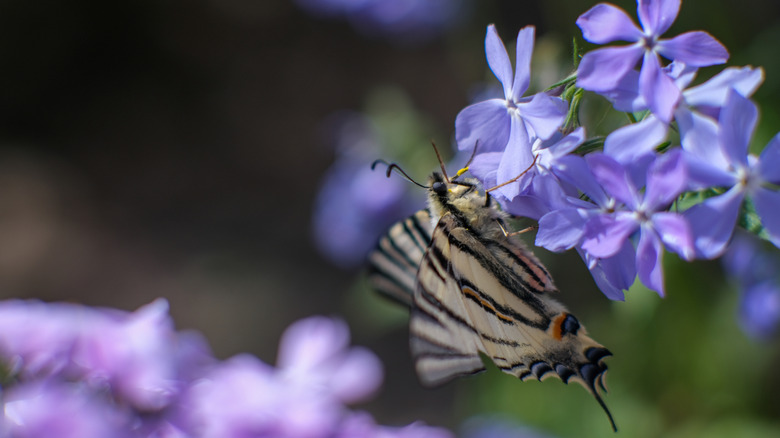Creeping Phlox Is The Gorgeous Purple Ground Cover That Butterflies Adore
If you're looking for the perfect ground cover, creeping phlox is the ideal choice in many locations. Not only does it quickly spread, and boast stunning blooms that can range from pink to purple to white depending on the cultivar, but it is also a pollinator magnet. This gorgeous flowering plant is a surefire way to fill your yard with butterflies, and perhaps even hummingbirds and other pollinators.
Creeping phlox can refer to a few different low-growing phlox species, including Phlox subulata and Phlox stolonifera. Both species are native to the United States and thrive in similar lighting and soil conditions. However, while Phlox subulata is hardy in zones 3 through 9, Phlox stolonifera is only hardy in zones 5 through 8, so it's important to know which species is the right fit for your region. If you're especially fond of purple flowers, some of the best cultivars to consider include 'Sherwood Purple' (Phlox stolonifera 'Sherwood Purple') and 'Purple Beauty' (Phlox subulata 'Purple Beauty').
Growing and caring for creeping phlox in the garden
Creeping phlox thrives in sunny areas, though Phlox stolonifera can also handle part shade. While both species of creeping phlox are tolerant of drought and dry soil, they grow best in soil that's moist but well-draining. Both species are deer resistant as well, meaning you won't need to try out any of your homemade deer repellent recipes for these flowers. When you're planting creeping phlox for ground cover, just be sure to give the plants some space, as Phlox subulata can spread up to 3 feet and Phlox stolonifera can spread about 18 inches.
Pairing your creeping phlox with other drought-resistant pollinator plants like salvias and goldenrods (Solidago spp.) is a perfect way to create a water-wise pollinator garden. A butterfly garden not only benefits the environment, but is also a great way to beautify your yard. Creeping phlox specifically draws in small butterfly species when it blooms around late spring. And because neither species of creeping phlox grows taller than a foot, you won't have to worry about your beautiful ground cover blocking your view of other plants.

